Louis Daguerre
description: French photographer, artist and chemist and inventor of the Daguerrotype (1787-1851)
15 results
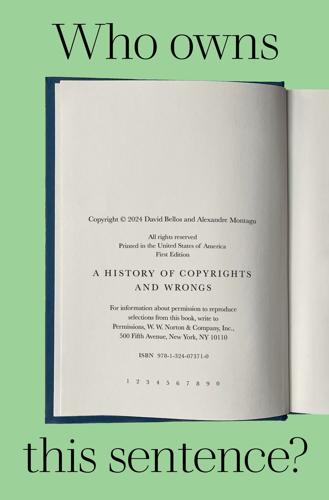
Who Owns This Sentence?: A History of Copyrights and Wrongs
by
David Bellos
and
Alexandre Montagu
Published 23 Jan 2024
Why bother with patenting a device if it really works better than what had gone before? Surely buyers will flock to it? On the other hand, if it represents an epochal change in human understanding and capacity, is it even right to attribute its ownership to a single person? France was confronted with those two questions when Louis Daguerre, drawing on a long line of earlier experimenters and especially the work of his former partner, Joseph Nicéphore Niépce, sought a patent for a device that made images of the real world on copper plates by exposing them to light. The ability to make “light-pictures” had been such an inspiring dream for so long that Daguerre’s application was referred to the National Assembly for debate.
…
He also pointed out the potential it had to reveal many mysteries of the physical world and to allow sciences of observation to take a leap forward. In short, it was a marvel that France should donate to all humankind. Therefore a patent should not be allowed. France adopted this discovery the moment it was made, and is proud to be able to make a gift of it to the whole world.125 Parliament awarded Louis Daguerre a civil list pension instead. It was a better deal than the one David Brewster got. Similarly, in the Soviet Union in the twentieth century, great inventors were rewarded not through patent protection but through an elaborate system of privilege and patronage. In 1947, an army mechanic, Mikhail Timofeyevich Kalashnikov, was tinkering with small arms when he came up with a new design for an automatic rifle.

Amusing Ourselves to Death: Public Discourse in the Age of Show Business
by
Neil Postman
and
Jeff Riggenbach Ph.
Published 1 Apr 2013
And yet, for all of the power of the telegraph, had it stood alone as a new metaphor for discourse, it is likely that print culture would have withstood its assault; would, at least, have held its ground. As it happened, at almost exactly the same time Morse was reconceiving the meaning of information, Louis Daguerre was reconceiving the meaning of nature; one might even say, of reality itself. As Daguerre remarked in 1838 in a notice designed to attract investors, “The daguerreotype is not merely an instrument which serves to draw nature ... [it] gives her the power to reproduce herself.”4 Of course both the need and the power to draw nature have always implied reproducing nature, refashioning it to make it comprehensible and manageable.

Raw Data Is an Oxymoron
by
Lisa Gitelman
Published 25 Jan 2013
Looking at scientific atlases, not Milton poems, Daston and Galison discern the arrival of a version of objectivity that is mechanical: characterized by the observer’s restraint and distinguishable from other versions in which the skill and discernment of the observing self counts for something, such as cases in which knowledgeable observers idealize multiple, idiosyncratic specimens into a single type, or in which practiced diagnosticians exert trained judgment in order to make sense of blurry scans. Mechanical objectivity emerged as a dominant ideal in the sciences only in the middle of the nineteenth century, and it is perhaps simplest to describe it contextually with reference to the development of photography during those same years. When Louis Daguerre, Henry Fox Talbot, and others developed and then popularized the first photographic processes, observers were struck by the apparent displacement of human agency in the production of lifelike images. Fox Talbot’s lavish account of his calotype process captures this displacement in its title, The Pencil of Nature.
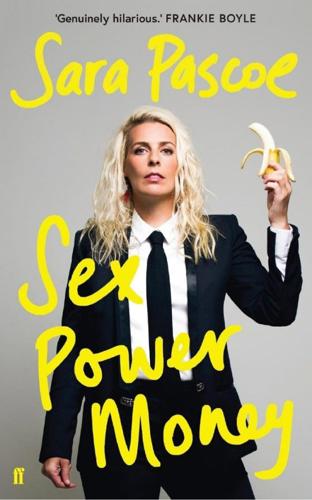
Sex Power Money
by
Sara Pascoe
Published 26 Aug 2019
James’s Fifty Shades of Grey trilogy. Now you know why libraries have those ‘Please masturbate quietly’ signs. The next exciting stage in human creativity was photography. This advanced incrementally through the late 1700s into the early 1800s. The images captured began as blurry, smudgy shadows, but by 1838 Louis Daguerre took the first ever photograph with a ‘recognisably human image’ in it. The photo is mainly of houses, but down on the pavement you can see a tiny man having his tiny shoes shined by another tiny man, and everyone in that photo is currently dead. As soon as cameras could take pictures of recognisably human people, the photographers started recognising that people should take their clothes off.

Been There, Done That: A Rousing History of Sex
by
Rachel Feltman
Published 14 May 2022
The oft-shared impression of Victorian-era society as being incredibly buttoned-up (both literally and figuratively) is not false: wealthy members of society adhered to strict standards of politeness and propriety when in public, and women were expected to stay virtuous (and often ignorant) until their wedding nights. But many Victorian men and women were obsessed with sex, and their desire for titillating content knew no bounds. Just as the internet has allowed twenty-first-century humans to expand their appetites for pornography, Victorian-era technology created a booming new industry for smut. Louis Daguerre invented the daguerreotype, a precursor to photographs as we know them, in 1839; someone had started circulating a daguerreotype depicting penetrative sex by the 1840s. Videos of sex became de rigueur by the turn of the twentieth century, though they were made clandestinely for the first few decades and were pretty much exclusively passed around in brothels and other male spaces.

Free culture: how big media uses technology and the law to lock down culture and control creativity
by
Lawrence Lessig
Published 15 Nov 2004
To filmmakers generally, whether affiliated with a studio or not? Free cultures are cultures that leave a great deal open for others to build upon; unfree, or permission, cultures leave much less. Ours was a free culture. It is becoming much less so. Chapter 2 "Mere Copyists" In 1839, Louis Daguerre invented the first practical technology for producing what we would call "photographs." Appropriately enough, they were called "daguerreotypes." The process was complicated and expensive, and the field was thus limited to professionals and a few zealous and wealthy amateurs. (There was even an American Daguerre Association that helped regulate the industry, as do all such associations, by keeping competition down so as to keep prices up.)
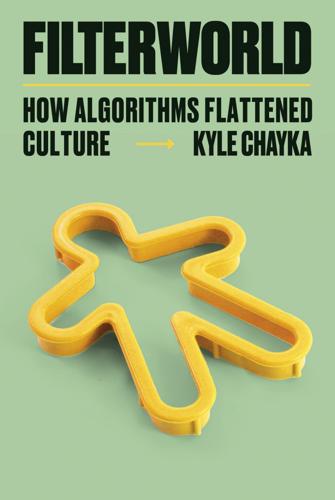
Filterworld: How Algorithms Flattened Culture
by
Kyle Chayka
Published 15 Jan 2024
Conclusion In 1939, Walter Benjamin completed a revised version of his essay “The Work of Art in the Age of Mechanical Reproduction.” The technology that he considered in the essay, photography, had already existed for over a century when he wrote it. The first photograph to include human figures had been made in 1838 by Louis Daguerre, who documented a Parisian boulevard as seen from the window of his studio—an utterly normal scene and yet an unprecedented achievement to freeze it as an image. Photography became more commonplace over time, and by Benjamin’s era, it was a mainstream product. Anyone could have their portrait taken or buy a postcard of a picturesque scene and send it to someone else so that they could see it, too.

Code: The Hidden Language of Computer Hardware and Software
by
Charles Petzold
Published 28 Sep 1999
He became a successful portrait artist. His painting General Lafayette (1825) hangs in New York's City Hall. In 1836, he ran for mayor of New York City on an independent ticket and received 5.7 percent of the vote. He was also an early photography buff. Morse learned how to make daguerreotype photographs from Louis Daguerre himself and made some of the first daguerreotypes in America. In 1840, he taught the process to the 17-year-old Mathew Brady, who with his colleagues would be responsible for creating the most memorable photographs of the Civil War, Abraham Lincoln, and Samuel Morse himself. But these are just footnotes to an eclectic career.

What Technology Wants
by
Kevin Kelly
Published 14 Jul 2010
Edward Jenner was preceded by four other scientists who all independently discovered the efficacy of vaccinations. Adrenaline was “first” isolated four times. Three different geniuses discovered (or invented) decimal fractions. The electric telegraph was reinvented by Joseph Henry, Samuel Morse, William Cooke, Charles Wheatstone, and Karl Steinheil. The Frenchman Louis Daguerre is famous for inventing photography, but three others (Nicephore Niepce, Hercules Florence, and William Henry Fox Talbot) also independently came upon the same process. The invention of logarithms is usually credited to two mathematicians, John Napier and Henry Briggs, but actually a third one, Joost Burgi, invented them three years earlier.
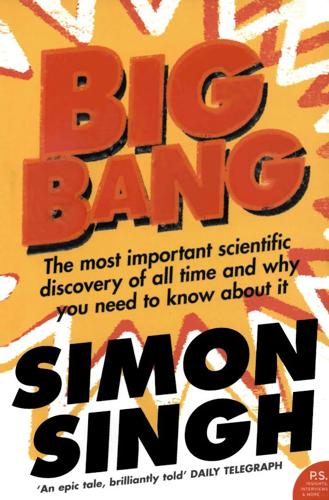
Big Bang
by
Simon Singh
Published 1 Jan 2004
If observers saw something in the sky, they would inevitably interpret it with some level of bias, especially if the phenomenon was fleeting and the interpretation relied on memory. Also, the observation could only be recorded in words or a sketch, neither of which could be relied upon for perfect accuracy. Then, in 1839, Louis Daguerre released details of the daguerreotype, a process for chemically imprinting an image on a metal plate. Suddenly, daguerreomania swept the world, with people queuing up to be photographed. As with every new technology, there were some critics, as demonstrated by this extract from the Leipzig City Advertiser : ‘The wish to capture evanescent reflections is not only impossible … but the mere desire alone, the will to do so, is blasphemy.

The Information: A History, a Theory, a Flood
by
James Gleick
Published 1 Mar 2011
Every word ever said, whether heard by a hundred listeners or none, far from having vanished into the air, leaves its indelible mark, the complete record of human utterance being encrypted by the laws of motion and capable, in theory, of being recovered—given enough computing power. This was overoptimistic. Still, the same year Babbage published his essay, the artist and chemist Louis Daguerre in Paris perfected his means of capturing visual images on silver-coated plates. His English competitor, William Fox Talbot, called this “the art of photogenic drawing, or of forming pictures and images of natural objects by means of solar light.”♦ Talbot saw something meme-like. “By means of this contrivance,” he wrote, “it is not the artist who makes the picture, but the picture which makes itself.”

The Rise and Fall of American Growth: The U.S. Standard of Living Since the Civil War (The Princeton Economic History of the Western World)
by
Robert J. Gordon
Published 12 Jan 2016
THE MOTION PICTURE FROM THE NICKELODEON TO GONE WITH THE WIND The history of the motion picture begins with the still photo, going back to Aristotle’s first observations about the laws of optics around 330 BC and to the invention of the pinhole camera (camera obscura) by an Arab around AD 1000. Until the 1820s, however, there was no way to preserve the images that emerged from the pinhole. The daguerreotype, invented in 1839 by Louis Daguerre, was the first process that allowed a permanent image to be created, and soon afterward, in 1841, the Englishman Henry Fox Talbot developed a method for making a negative from which multiple positive prints could be made. However, these early processes were clumsy and relied on wet plate negatives that had to be developed quickly after the photograph was taken, in practice requiring the photographer to carry a darkroom along with him.

The Pursuit of Power: Europe, 1815-1914
by
Richard J. Evans
Published 31 Aug 2016
He made sure that his own voice was recorded for posterity by Edison as well. At the end of the century all these activities began to be put into the shade by the rise of the entertainment medium that was soon to dominate the leisure time of the masses: the cinema. Already in 1839 the Frenchman Louis Daguerre (1787–1851) had produced the first photograph – known as the daguerreotype – and technical improvements by the 1850s enabled the British photographer Roger Fenton (1819–69) to take dramatic pictures of the Crimean War. Early photographs needed a long exposure to achieve results. Sitters had to remain still for as much as half an hour if they wanted an unblurred portrait.
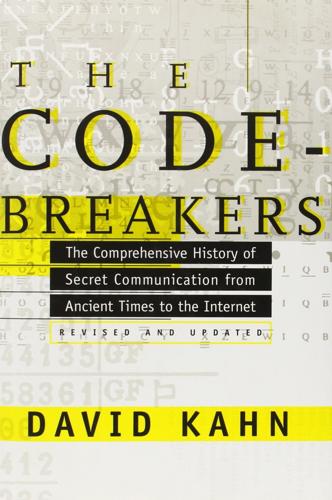
The Codebreakers: The Comprehensive History of Secret Communication From Ancient Times to the Internet
by
David Kahn
Published 1 Feb 1963
Whether the former is akin to code or not, the latter resembles cipher and, in respect of its clear analogy to ciphony, is called “cifax” (from “cipher”+ta shortening of “facsimile”). It might seem at first that the optical systems would be the older. But though lenses for distorting have been available since at least the time of Anton van Leeuwenhoek, there was for a long time no way of recording the distorted image. And when Louis Daguerre devised such a method, it soon became clear that no amount of viewing an out-of-focus photograph through correcting lenses would reproduce the original external object with clarity. Since this would mean that an encoded picture could never be decoded, no systems based on this method were devised.

Europe: A History
by
Norman Davies
Published 1 Jan 1996
But they refer to a different category, ‘powered and controlled flight’.2 PHOTO AN old barnyard at Chalons-sur-Sâone had the distinction of transmitting its image onto the world’s first photograph. One day in 1826, Joseph Nicéphore Niepce succeeded in capturing the image on pewter plate after an exposure of eight hours. Thirteen years later Niepce’s partner, Louis Daguerre (1789–1851), was able to market a photographic system which required an exposure of thirty minutes onto copper plates covered by light-sensitive silver chloride. The Daguerrotype launched a long process of evolution which led to the popular box camera, colour film, movies, sound movies, X-rays, infra-red and miniature photography, and, most recently, electronic camcorders.1 The impact of photography on peace and war cannot be exaggerated.